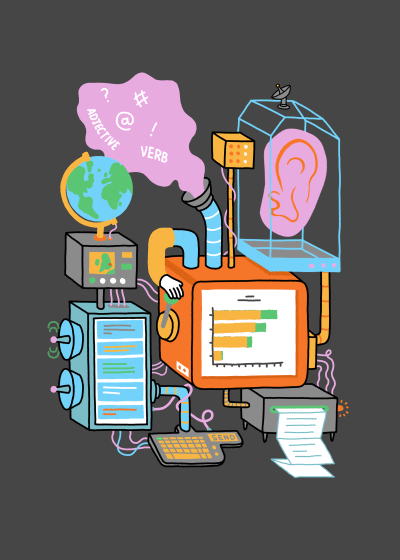Others
21 July 2021
Develop Your Design Thinking

What is design thinking?
Usually when web developers set strategies to design a product based on what their clients/users want they often stumble. Either they collect a lot of backward-looking data, which doesn’t tell them what future customers really want. Or they make risky bets based on instinct instead of evidence. Design thinking is a strategy-making process that avoids these mistakes by applying the use of certain tools from the world of design and shifting the focus to human behaviour and analyzing how certain things will affect different individuals. It was popularized by David M. Kelly and Tim Brown of IDEO and Roger Martin of the Rotman School. Design thinking has three major stages:
- Stage 1: Invent The Future
- Stage 2: Test Your Ideas
- Stage 3: Bring It To Life

The 3 Major Stages:
Following are the three major stages of the design thinking process that can assure that your design will meet your future customer’s wants.
Stage 1: Invent the Future
Form a few theories about what your users might want, by immersing yourself in their lives. Instead of polling them about specific design features, observe and ask questions about their behavior. And after you know what they might want but don’t have, you can go for the next step.

Stage 2: Test Your Ideas
Use iterative prototyping on the designs you’ve created and conduct a few quick experiments to see how users respond. Iterative prototyping is basically a repeating cycle of designing, prototyping, testing, and refining multiple “versions” of a product (in this case a web design). After you’re done with the iterative prototyping process, you can make the necessary changes and move on to the final stage of the design thinking process.

Stage 3: Bring it to Life
The last stage of the design thinking process involves bringing the new design to life. After you’re done with the iterative prototyping process and you’ve got a winner, you can now start developing the final product based on all the points collected in the previous two stages.

Why design thinking works:
Organizing your work makes way for improvement and innovation. The same was the case for the manufacturing industry when Total Quality Management was introduced in the 1980s by Toyota. Design thinking has the potential to do for innovation in web development exactly what TQM did for manufacturing. By strategically structuring your whole design process, you can not only improve the process as is but also make room for innovation. Because in the first stage instead of asking the user/client for what they want, what you do is you observe their behaviors and analyze them based on what they would want but not know yet. What this does is that it makes room for innovation because you usually end up making a design the client didn’t actually ask for but wanted and didn't know that they wanted that design.

Conclusion:
By using imaginative, human-centered problem solving, design thinking can help you unlock new markets and identify new strategies for designing your product and effectively target your customer wants.

